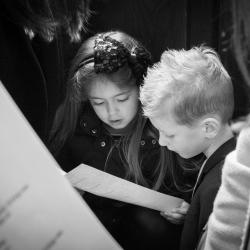Heilige Liduina van Schiedam
In 1859, the Onze Lieve Vrouw Visitatie church was put into use at the Nieuwe Haven in Schiedam. It was popularly called the Frankelandsekerk after the area (West-Frankeland) in which it was located. In 1892, a Saint Liduina chapel was set up in this church, including a Liduina altar, a gilded reliquary and a statue of Liduina with her angel. In 1931, the church was officially dedicated to Saint Liduina and was called the Liduina church. This church was demolished in 1968, after which the veneration of Saint Liduina was transferred to the Singel church, which was then given the name Roman Catholic Parish of Saint Liduina and Our Lady of the Rosary.


